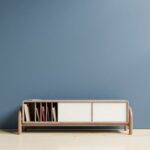Is it ok to mix metals in home decor? This question has been on the minds of many interior design enthusiasts as the trend of mixing metals continues to gain popularity. In recent years, the traditional rule of sticking to one metal finish throughout a space has been challenged, giving way to an exciting and eclectic approach. This article explores the concept of mixing metals in home decor, delving into its rise in popularity and acceptance.
In this age of design-forward thinking, the idea of combining different metal finishes and styles has become more widely accepted than ever before. Gone are the days when matching every piece in a room was considered essential for cohesive design. The trend towards mixed metals allows for a sense of individuality and personal expression through decor. By intentionally selecting contrasting or complementary finishes, homeowners can create a unique and visually engaging space.
Understanding the basics is key when embracing this trend. Different metal finishes, such as polished chrome, brushed nickel, antique brass, and matte black each have their own characteristics that can greatly impact the overall look and feel of a room. Additionally, identifying different metal styles – from minimalist industrial to glamorous Art Deco – opens up endless possibilities for incorporating mixed metals into various aspects of home decor.
As this trend gains momentum, it’s important to understand how to strike the right balance between different metals in your space. Choosing complementary metals can enhance your decor while mismatching them may result in an unintended clash. In this article, we will provide tips and tricks for selecting metals that harmonize with each other and considerations for matching them with existing decor elements.
The growing trend of mixing metals in home decor offers homeowners unrivaled creative freedom in designing their spaces. With an understanding of metal finishes and styles along with some expert insights and real-life examples, anyone can confidently experiment with unconventional pairings and create stunning environments that reflect their personal style. Let’s delve deeper into the world of mixed metals and unlock the immense design potential they offer.
Understanding the Basics
Metal finishes and styles play a crucial role in creating cohesive and visually appealing home decor. Understanding the different options available can help homeowners make informed decisions when it comes to mixing metals in their space.
When it comes to metal finishes, there are several popular options to choose from. One of the most common finishes is polished or shiny metal, which reflects light and adds a touch of sophistication to any room. Matte or brushed metal finishes, on the other hand, have a more subdued look and often offer a contemporary or industrial vibe.
Another important consideration is the style of the metal itself. Traditional metals such as brass and gold are classic choices that add warmth and elegance to any space. Alternatively, sleek and modern metals like stainless steel or nickel offer a clean and minimalist aesthetic. Copper has also gained popularity in recent years for its unique reddish-orange hue that adds warmth and character to a room.
It’s important to note that while mixing different metal finishes can create an eclectic look, there are still guidelines to consider for achieving a harmonious balance. A general rule of thumb is to stick with two or three complementary metals throughout the space rather than overwhelming it with too many different options.
By selecting finishes that share similar undertones or hues, homeowners can ensure that each metal complements rather than competes with one another. Additionally, considering the existing decor elements such as furniture or lighting fixtures can help guide the selection process for complementary metals.
Overall, understanding the basics of different metal finishes and styles allows homeowners to make educated choices when it comes to mixing metals in their home decor. By exploring various options and considering factors such as finish, style, and existing decor elements, they can create a cohesive and visually pleasing space that showcases their personal style and creativity.
The Art of Balancing
When it comes to mixing metals in home decor, achieving the perfect balance is key. The art of balancing involves selecting metals that complement each other and harmonize with the existing decor elements in your space. Here are some tips and tricks to help you choose the right metals for your home:
- Consider the dominant metal finish: Start by identifying the dominant metal finish in your space. This could be the hardware on your furniture, light fixtures, or even the metal frames of your windows and doors. Once you determine the dominant metal, you can use it as a guide to select other metals that will complement it rather than compete with it.
- Mix warm and cool tones: Mixing warm-toned metals like gold or brass with cool-toned metals like silver or chrome can create an interesting contrast in your space. This combination adds depth and visual interest while maintaining a cohesive look. For example, you can pair a gold side table with silver candlesticks or vice versa.
- Take inspiration from color theory: Just as colors have undertones, so do metals. By understanding the undertones of different metal finishes, you can create harmonious combinations that work well together. For instance, if you have brushed nickel accents with blue undertones, pairing them with pewter accents that also have cool undertones would create a cohesive look.
Remember, there are no hard rules when it comes to mixing metals in home decor. It’s all about personal preference and finding a balance that works for your space. Experiment with different combinations, step back, and see how they enhance the overall aesthetic of your room.
If you’re feeling adventurous and want to break traditional design norms, consider experimenting with unconventional metal pairings. Embrace eclectic combinations by mixing copper with black iron or bronze with stainless steel. These unexpected combinations can add a bold and unique touch to your space.
Breaking the Rules
The Value of Breaking Traditional Design Norms
In the world of home decor, there has always been a set of established rules and guidelines to follow. However, as trends evolve and design boundaries are pushed, there is an increasing acceptance for breaking these traditional norms. Embracing eclectic metal combinations is one such trend that challenges the conventional rules of interior design.
By mixing different metals in home decor, you can create a bold and unique look that adds personality to any space. This approach allows you to step outside the box and experiment with unconventional pairings that bring a sense of excitement and individuality into your home. Rather than adhering strictly to one metal finish or style, mixing metals enables you to showcase your creativity and express your personal style.
Successful Examples of Mixed Metal Combinations
To break free from traditional design norms and achieve visually striking results with mixed metals, it’s helpful to draw inspiration from successful examples. There are countless instances where designers have skillfully combined various metals to create cohesive and eye-catching spaces.
One example is a living room that features a combination of brushed brass and chrome. While these two metals may seem like contrasting elements, when placed together thoughtfully, they can create a visually stunning effect. In this case, the mix of warm gold tones with cool silver tones adds depth and interest to the space.
Another example is a kitchen that combines stainless steel appliances with copper accents. The sleekness of stainless steel paired with the warmth and rustic charm of copper creates a beautiful contrast that elevates the overall aesthetic of the kitchen.
These successful combinations demonstrate how breaking design rules can lead to truly captivating spaces that reflect your unique taste.
Tips for Embracing Eclectic Metal Combinations
When it comes to embracing eclectic metal combinations in your home decor, there are some tips that can help you achieve harmonious results:
- Start small: If you’re unsure about mixing metals, begin with small accent pieces like lighting fixtures or decorative accessories. This allows you to experiment and find what combination works best for your space.
- Consider the dominant metal: Choose one dominant metal that will be the main focal point in your space, and then use other metals as supporting accents. This ensures that the different metals work together harmoniously instead of competing for attention.
- Balance warm and cool tones: Mixing warm-toned metals like brass or gold with cool-toned metals like silver or chrome creates a balanced and visually appealing contrast. This balance is key to achieving a cohesive and pleasing look.
- Use texture to unify: If you’re combining multiple metal finishes, consider using texture to tie them together. For instance, pair brushed nickel with hammered copper to create a connection between the two different finishes.
By embracing eclectic metal combinations and breaking traditional design rules, you can create unique and captivating spaces that showcase your personal style. With the right balance and thoughtfulness, mixing metals can add character and interest to any room in your home.
Creating Focal Points
Incorporating metal accents into your home decor is a great way to create focal points and add visual interest to different areas of your space. Metal accents can come in various forms, including furniture pieces, lighting fixtures, and accessories. Here are some ideas and tips for incorporating metal accents into your home:
- Furniture: Metal furniture pieces can serve as bold statement pieces in any room. A wrought iron bed frame can add a touch of elegance to a bedroom, while a sleek metal dining table can bring a modern edge to your dining area. Consider mixing different metals for an eclectic look, such as combining brass and stainless steel in the same furniture piece.
- Lighting: Metal lighting fixtures can not only illuminate your space but also serve as unique decorative elements. A copper pendant light can create a warm and inviting atmosphere in the kitchen, while a brushed nickel chandelier can add a touch of glamour to your dining room. When choosing metal lighting fixtures, consider the style of your space and how the fixture will complement other elements.
- Accessories: Smaller metal accents like wall art, sculptures, or candle holders can add personality and flair to any room. Consider incorporating brass or gold metallic frames for mirrors or artwork on the walls to create eye-catching focal points. You can also mix different metal finishes by combining silver and rose gold accessories on coffee tables or shelves.
To ensure that your metal accents stand out, consider placing them against contrasting backgrounds or colors that complement their tones. For example, pair brass accessories with deep blue walls for an elegant contrast or choose black accent pieces against white surfaces for a striking contemporary look.
Remember that less is more when it comes to incorporating metal accents. Select key pieces that will make an impact without overwhelming the space. By carefully selecting and arranging your metal accents, you can create focal points that will catch the eye and elevate the overall design aesthetic of your home decor.
- Choose statement metal furniture pieces like a wrought iron bed frame or a sleek metal dining table.
- Opt for unique metal lighting fixtures, such as a copper pendant light or a brushed nickel chandelier.
- Accessorize with smaller metal accents like wall art, sculptures, or candle holders.
- Place metal accents against contrasting backgrounds or colors that complement their tones.
- Select key pieces to create focal points without overwhelming the space.
Harmonizing with Color and Style
When it comes to mixing metals in home decor, one important aspect to consider is how they can be harmonized with color and style. Coordinating mixed metals with other elements in the space is crucial to creating a cohesive and visually appealing design. By carefully selecting metal finishes that complement the overall color scheme and interior design style, homeowners can achieve a balanced and harmonious look.
When coordinating mixed metals with color schemes, it’s important to consider the undertones of each metal finish. Warm-toned metals like brass or gold can be paired with warm colors such as red, orange, or yellow. On the other hand, cool-toned metals like silver or chrome work well with cool colors like blue, green, or purple. However, contrasting warm and cool tones can also create an interesting and dynamic look.
In addition to color coordination, it’s essential to consider the overall interior design style when mixing metals. Different metal finishes lend themselves better to certain styles. For example, polished stainless steel or chrome finishes are often associated with modern or contemporary styles due to their sleek and clean appearance. Antique brass or copper finishes, on the other hand, are commonly used in rustic or traditional designs for their warm and aged look.
| Tips for Coordinating Mixed Metals |
|---|
| Consider the undertones of each metal finish when pairing them with specific colors. |
| Contrasting warm and cool metal tones can create an interesting and dynamic look. |
| Choose metal finishes that align with your overall interior design style. |
By following these tips and considering the color scheme and style of the space, homeowners can successfully coordinate mixed metals in their home decor. Whether it’s incorporating a combination of brass and chrome finishes in a modern kitchen or blending silver and gold accents in a traditional living room, harmonizing metals with other elements is essential for creating a cohesive and visually appealing design.
Maintenance and Care
Metal finishes in home decor can bring a touch of elegance and sophistication to any space. However, it is important to consider the maintenance and care required to ensure the durability and longevity of these metal elements. By properly caring for your metal finishes, you can prevent tarnishing and damage, keeping them looking beautiful for years to come.
Essential Tips for Cleaning and Maintaining Metal Finishes
Cleaning and maintaining metal finishes in your home decor doesn’t have to be an arduous task. With the right techniques and products, you can easily keep your metals shining bright. Here are some essential tips for cleaning different metal finishes:
- Stainless Steel: Use a mild detergent mixed with warm water and a soft cloth to clean stainless steel surfaces. Avoid using abrasive cleaners or scrub brushes that could scratch the surface.
- Brass: To clean brass fixtures, mix equal parts of lemon juice and baking soda to create a paste. Gently rub the paste onto the brass, rinse with water, and dry thoroughly.
- Copper: To maintain the natural shine of copper, make a solution with equal parts white vinegar and salt dissolved in warm water. Dip a soft cloth into the mixture, gently wipe off any tarnish or dirt, then rinse with water and dry completely.
Protective Measures to Prevent Tarnishing and Damage
In addition to regular cleaning, taking some protective measures can help prolong the life of your metal finishes:
- Avoid Direct Sunlight: Excessive exposure to sunlight can cause fading or discoloration on metal surfaces. Consider using curtains or blinds to protect your metals from direct sunlight during peak hours.
- Use Coasters: When placing glasses or hot objects on metal surfaces such as tables or countertops, use coasters or trivets to prevent scratches or heat marks.
- Handle With Care: When moving furniture or accessories with metal finishes, be mindful of avoiding any accidental scratches or dents. Use padding or furniture sliders to prevent damage during transportation.
- Apply Protective Coatings: For certain metal finishes like bronze or iron, applying a protective coating such as wax or lacquer can help prevent tarnishing and corrosion.
By following these maintenance and care tips, you can ensure that your metal finishes in home decor remain in pristine condition for years to come. Taking the time to clean and protect them will not only enhance their longevity but also maintain the overall aesthetic appeal of your space.
Expert Insights
Interior designers play a crucial role in guiding homeowners on how to achieve a cohesive and visually pleasing space. When it comes to mixing metals in home decor, there are varying opinions among experts. Some designers fully embrace this trend as a way to add depth and interest to a room, while others prefer more traditional design principles. Let’s explore different interior designers’ perspectives on mixing metals and gain insights into their experiences.
- Sarah Richardson: known for her eclectic style and love for mixing patterns and textures, Sarah Richardson believes that mixing metals can create a layered and dynamic look in any space. She suggests starting with one dominant metal finish as an anchor, then adding accents of other metals for balance.
- Nate Berkus: famous for his approachable and diverse design style, Nate Berkus encourages homeowners to trust their instincts when it comes to mixing metals. He emphasizes the importance of considering the overall aesthetic of the room and choosing metal finishes that complement each other without overpowering the space.
- Kelly Wearstler: recognized for her bold and glamorous designs, Kelly Wearstler is an advocate for pushing boundaries with mixed metals. She believes that combining warm and cool tones creates visual intrigue and adds a sense of sophistication to any interior.
These are just a few examples of interior designers who have shared their insights on mixing metals in home decor. It’s important to remember that ultimately, the decision lies with the homeowner’s personal taste and preferences. By seeking inspiration from various design professionals, individuals can make informed choices when incorporating mixed metals into their own spaces.
| Designer | Opinion on Mixing Metals |
|---|---|
| Sarah Richardson | Mixing metals adds depth and interest. |
| Nate Berkus | Trust your instincts and choose complementary metal finishes. |
| Kelly Wearstler | Combining warm and cool tones creates visual intrigue. |
Case Studies
In this section, we will explore real-life examples of successful metal mixes in home decor to provide inspiration and practical insights for readers. These case studies will showcase homes where mixed metals have been effectively incorporated, highlighting the thought process behind each design and discussing key takeaways.
Case Study 1: Modern Industrial Loft
In this industrial loft, the homeowners successfully mixed brushed nickel, black iron, and copper finishes to create a cohesive and visually appealing space. The kitchen features brushed nickel appliances paired with sleek black iron pendant lights, while copper accents are strategically placed throughout the living area.
The secret to their success is maintaining a balance between the various metals and ensuring that each one has its moment to shine. By using metal in both large and small-scale elements, they were able to tie the entire space together seamlessly.
Case Study 2: Eclectic Bohemian Retreat
For those who love an eclectic style, this bohemian retreat showcases how mixing metals can add warmth and character to a space. In this bedroom design, gold and silver accents coexist harmoniously. The bed frame with gold leaf detailing stands out against a silver wallpapered accent wall. The room is further enhanced with silver-framed artwork paired with gold hardware on furniture pieces. By embracing unconventional metal pairings, the homeowners have created a unique and visually striking oasis.
Case Study 3: Traditional Glamour with a Twist
This classic yet glamorous living room design demonstrates how to mix metals in a traditional setting without sacrificing elegance. To achieve this aesthetic, bronze lighting fixtures are combined with polished chrome accents throughout the space. Bronze side tables complement chrome-framed mirrors hanging on the walls, creating a harmonious blend of warm antique tones with sleek contemporary finishes. This case study proves that even within more formal interior design styles, mixing metals can add depth and interest to a room.
By exploring these real-life examples of successful metal mixes in home decor, readers can gain inspiration and confidence in experimenting with the trend themselves. These case studies highlight the importance of balance, strategic placement, and coordination with other elements in the room. Whether it be a modern industrial loft, an eclectic bohemian retreat, or a traditionally glamorous space with a twist, mixing metals can elevate any interior design style and create a visually stunning home.
Conclusion
In conclusion, the trend of mixing metals in home decor offers a unique and creative way to elevate the style and visual interest of any space. Through this article, we have explored various aspects of this trend, from understanding different metal finishes and styles to mastering the art of balancing and coordinating them with other elements in the room. Additionally, we have seen how mixing metals can break traditional design norms and open up opportunities for experimentation and personal expression.
While there are no hard rules when it comes to mixing metals, it is important to consider the overall aesthetic of the space and choose metals that complement each other. By understanding the characteristics of different metal finishes and styles, homeowners can make informed choices that enhance their existing decor elements. Furthermore, incorporating metal accents in furniture, lighting, and accessories can create eye-catching focal points throughout the home.
It is also crucial to take maintenance and care into consideration when incorporating mixed metals into home decor. By following essential cleaning and maintenance tips for various metal finishes, homeowners can ensure durability and longevity of their decorative pieces. Additionally, experts agree that embracing creativity and learning from real-life examples are key when it comes to successfully incorporating mixed metals into home interiors.
Frequently Asked Questions
Can you decorate with different metals?
Yes, it is absolutely possible and even encouraged to decorate with different metals. Mixing metals can add depth, contrast, and visual interest to a space. The key to successfully incorporating different metals into your decor is to create a cohesive and balanced look.
You can achieve this by selecting a dominant metal that will serve as the main focus, and then incorporating secondary metals as accents or supporting elements. For instance, you might choose gold as the dominant metal in your room and complement it with touches of silver or brass for added texture and variety.
Is it okay to mix metals with light fixtures?
Mixing metals with light fixtures can be an excellent way to elevate your interior design scheme. It adds a layer of complexity and sophistication, making the space feel more curated and intentional. However, there are a few considerations to keep in mind when mixing metals with light fixtures.
Firstly, strive for balance – avoid overwhelming the space by using too many different metal finishes. It’s generally best to limit yourself to two or three different metals that complement each other well. Secondly, consider the overall style of the room and the desired aesthetic – some combinations work better in contemporary settings, while others may suit traditional or eclectic spaces more suitably.
Can you mix hardware finishes in a house?
Yes, it is perfectly acceptable to mix hardware finishes in a house. In fact, doing so can bring a sense of character and uniqueness to your home decor. Similar to mixing metals in general decorating schemes, successfully combining hardware finishes relies on establishing harmony among them.
When mixing hardware finishes like doorknobs, pulls, faucets, etc., it’s crucial to strike a balance between complementary elements while ensuring they don’t clash or compete with each other excessively. For example, you may choose brushed nickel handles on cabinetry paired with oil-rubbed bronze faucets in a kitchen for an eclectic yet cohesive look that plays off each other harmoniously rather than creating visual chaos.

I’m thrilled to be your companion on this exciting journey through the world of home decor and design. With a passion for turning houses into homes and a keen eye for the finer details, I’m here to help you transform your living spaces into beautiful, functional, and meaningful havens.





